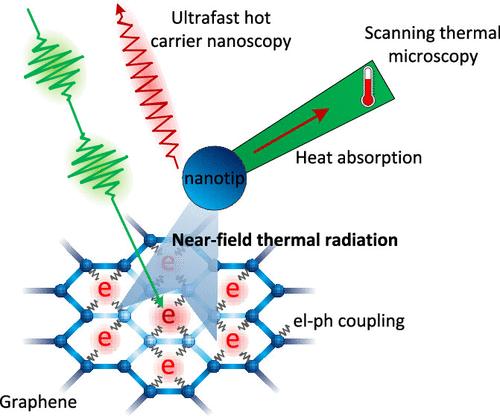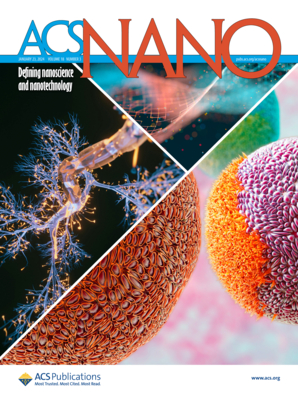Near-Field Thermal Radiation as a Probe of Nanoscale Hot Electron and Phonon Transport
IF 15.8
1区 材料科学
Q1 CHEMISTRY, MULTIDISCIPLINARY
引用次数: 0
Abstract
Understanding the energy transport properties of hot energy carriers is of great importance for a diverse range of topics from nanoelectronics and photochemistry to the discovery of quantum materials. While much progress has been made in the study of hot carrier dynamics using ultrafast far-field time-resolved spectroscopies, it remains a great challenge to understand hot carrier transport and interaction dynamics at the nanoscale. Existing theoretical models yield only qualitative predictions that are difficult to validate against experiments. Here we present a theoretical framework that extends the study of near-field thermal radiation into the ultrafast time domain, enabling sensitive local probing and quantitative study of nanoscale hot electron and phonon transport effects that have been challenging to quantify. The proposed technique of near-field hot carrier nanoscopy directly links the features of different nonequilibrium effects to near-field thermal absorption and scattering by a scanning nanotip. Our model predicts ultrafast thermal radiation in response to photoexcitation, as well as elucidates the nanoscopic radiation properties of a number of hot carrier dissipation pathways, including nonlinear electron supercollision, second sound, and nonlocal phonon transport. This work is expected to guide experiments to identify the fundamental constraints unlocking thermal wave (second sound) propagation and address the roles of competing hydrodynamic and ballistic phonon effects at the nanoscale.

求助全文
约1分钟内获得全文
求助全文
来源期刊

ACS Nano
工程技术-材料科学:综合
CiteScore
26.00
自引率
4.10%
发文量
1627
审稿时长
1.7 months
期刊介绍:
ACS Nano, published monthly, serves as an international forum for comprehensive articles on nanoscience and nanotechnology research at the intersections of chemistry, biology, materials science, physics, and engineering. The journal fosters communication among scientists in these communities, facilitating collaboration, new research opportunities, and advancements through discoveries. ACS Nano covers synthesis, assembly, characterization, theory, and simulation of nanostructures, nanobiotechnology, nanofabrication, methods and tools for nanoscience and nanotechnology, and self- and directed-assembly. Alongside original research articles, it offers thorough reviews, perspectives on cutting-edge research, and discussions envisioning the future of nanoscience and nanotechnology.
 求助内容:
求助内容: 应助结果提醒方式:
应助结果提醒方式:


